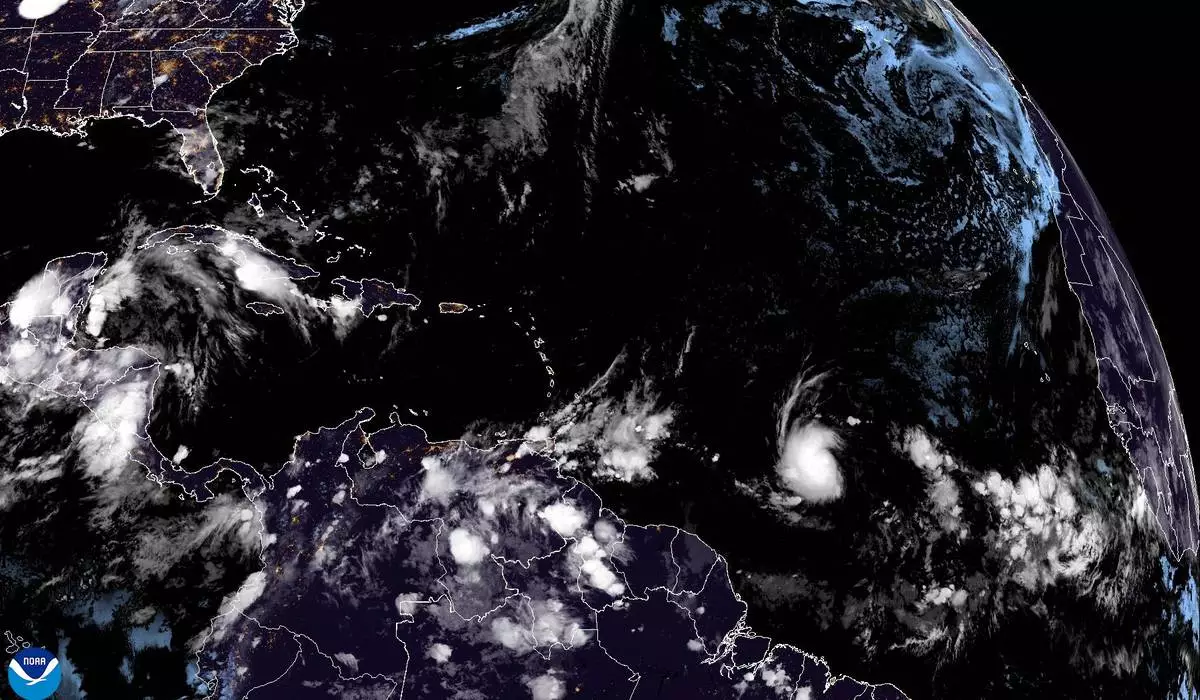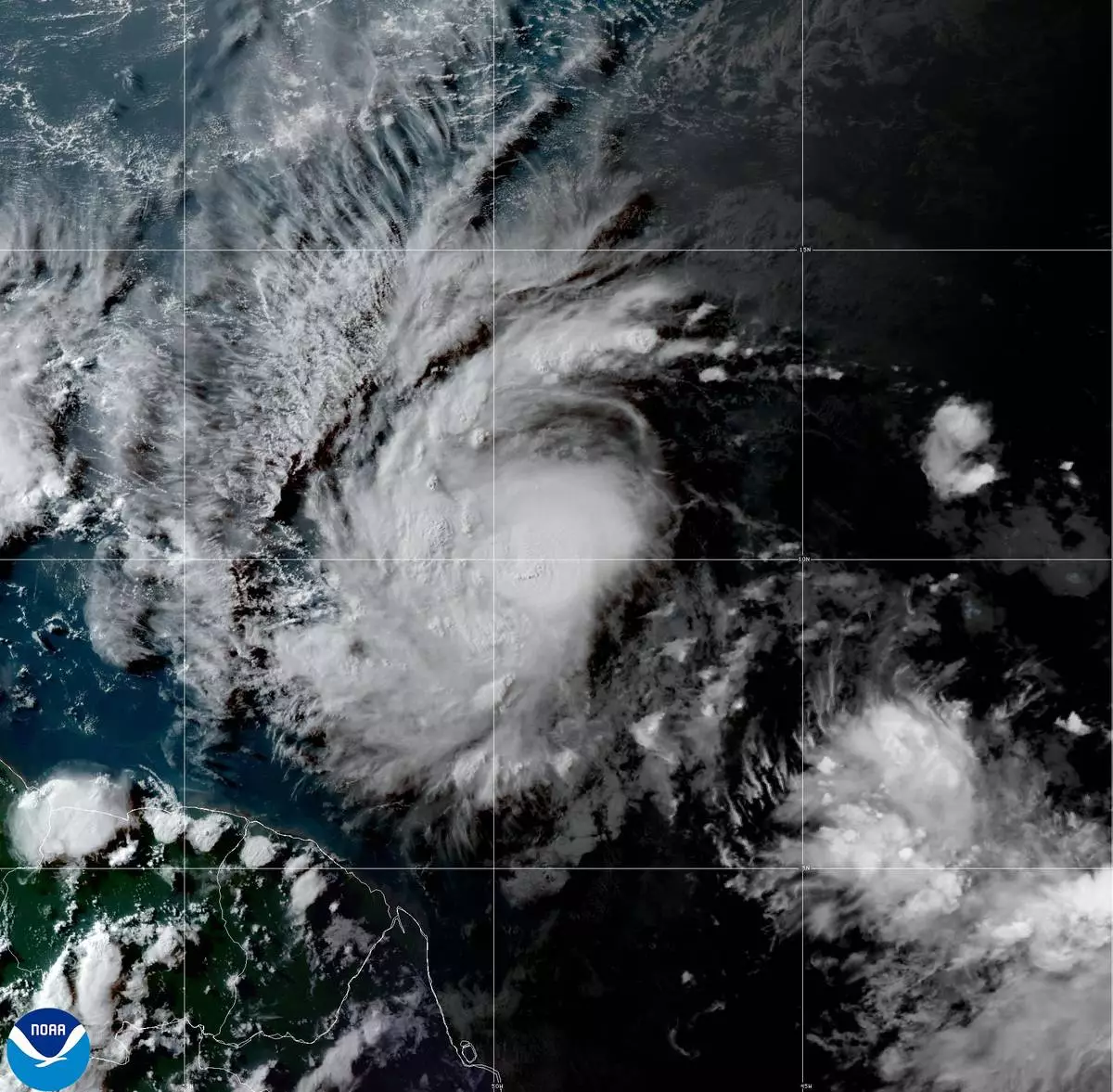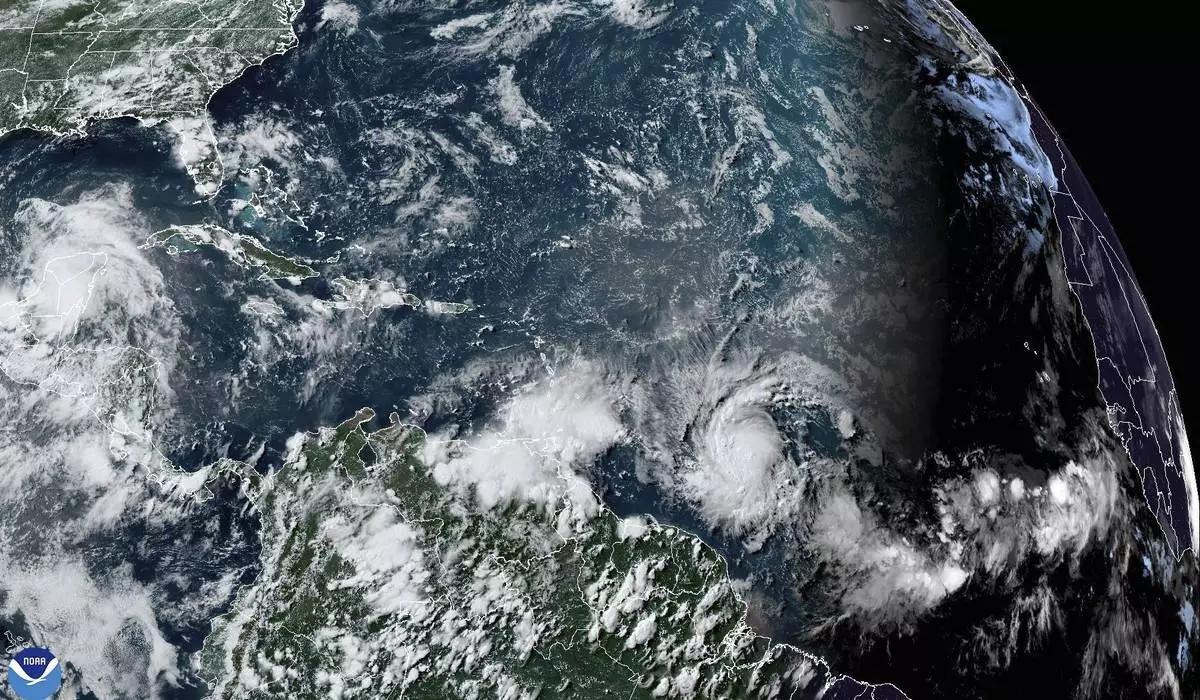WASHINGTON (AP) — A measure of prices that is closely tracked by the Federal Reserve suggests that inflation pressures in the U.S. economy are continuing to ease.
Friday's Commerce Department report showed that consumer prices were flat from April to May, the mildest such performance in more than four years. Measured from a year earlier, prices rose 2.6% last month, slightly less than in April.
Excluding volatile food and energy prices, so-called core inflation rose 0.1% from April to May, the smallest increase since the spring of 2020, when the pandemic erupted and shut down the economy. And compared with a year earlier, core prices were up 2.6% in May, the lowest increase in more than three years.
Prices for physical goods actually fell 0.4% from April to May. Gasoline prices, for example, dropped 3.4%, furniture prices 1% and the prices of recreational goods and vehicles 1.6%. On the other hand, prices for services, which include items like restaurant meals and airline fares, ticked up 0.2%.
The latest figures will likely be welcomed by the Fed's policymakers, who have said they need to feel confident that inflation is slowing sustainably toward their 2% target before they'd start cutting interest rates. Rate cuts by the Fed, which most economists think could start in September, would lead eventually to lower borrowing rates for consumers and businesses.
"If the trend we saw this month continues consistently for another two months, the Fed may finally have the confidence necessary for a rate cut in September,” Olu Sonola, head of U.S. economic research at Fitch Ratings, wrote in a research note.
The Fed raised its benchmark rate 11 times in 2022 and 2023 in its drive to curb the worst streak of inflation in four decades. Inflation did cool substantially from its peak in 2022. Still, average prices remain far above where they were before the pandemic, a source of frustration for many Americans and a potential threat to President Joe Biden's re-election bid.
During Thursday night's presidential debate, Donald Trump attacked Biden's record on inflation. The presumptive Republican nominee asserted that Biden inherited low rates of inflation when he entered office in January 2021 but that prices “blew up under his leadership.”
While inflation was in fact ultra-low at the start of the Biden presidency, that was largely because the nation was still recovering from the brutal Covid recession, which flattened the economy. Once the economy began surging back to life with unexpected speed, causing severe shortages of goods and labor, inflation soared.
Friday’s price figures added to signs that inflation pressures are continuing to ease, though more slowly than they did last year.
The Fed tends to favor the inflation gauge that the government issued Friday — the personal consumption expenditures price index — over the better-known consumer price index. The PCE index tries to account for changes in how people shop when inflation jumps. It can capture, for example, when consumers switch from pricey national brands to cheaper store brands.
Like the PCE index, the latest consumer price index showed that inflation eased in May for a second straight month. It reinforced hopes that the acceleration of prices that occurred early this year has passed.
The much higher borrowing costs that followed the Fed’s rate hikes, which sent its key rate to a 23-year high, were widely expected to tip the nation into recession. Instead, the economy has kept growing, and employers have kept hiring.
Lately, though, the economy’s momentum has appeared to flag, with higher rates seeming to weaken the ability of some consumers to keep spending freely. On Thursday, the government reported that the economy expanded at a 1.4% annual pace from January through March, the slowest quarterly growth since 2022. Consumer spending, the main engine of the economy, grew at a tepid 1.5% annual rate.
Friday's report also showed that consumer spending and incomes both picked up in May, encouraging signs for the economy. Adjusted for inflation, spending by consumers — the principal driver of the U.S. economy — rose 0.3% last month after having dropped 0.1% in April.
After-tax income, also adjusted for inflation, rose 0.5%. That was the biggest gain since September 2020.

FILE - A waiter carries an order at Kao Bar & Grill in Hallandale Beach, Fla., July 10, 2023. On Friday, June 28, 2024, the government reports on the inflation gauge that the Federal Reserve follows most closely, a data set that will influence the Fed's decision on when to begin cutting interest rates in the coming months. (AP Photo/Rebecca Blackwell, File)

A sale sign is displayed at a retail store in Rosemont, Ill., Tuesday, June 25, 2024. On Friday, June 28, 2024, the government reports on the inflation gauge that the Federal Reserve follows most closely, a data set that will influence the Fed’s decision on when to begin cutting interest rates in the coming months. (AP Photo/Nam Y. Huh)

FILE - Cooper models are tended to in the service bay of a Mini dealership Nov. 3, 2022, in Highlands Ranch, Colo. On Friday, June 27, 2024, the government reports on the inflation gauge that the Federal Reserve follows most closely, a data set that will influence the Fed's decision on when to begin cutting interest rates in the coming months. (AP Photo/David Zalubowski, File)
SAN JUAN, Puerto Rico (AP) — Hurricane Beryl is forecast to strengthen into a powerful Category 4 storm as it approaches the southeast Caribbean, which began shutting down Sunday amid urgent pleas from government officials for people to take shelter.
Hurricane warnings were in effect for Barbados, St. Lucia, Grenada, and St. Vincent and the Grenadines. Beryl's center is expected to pass about 70 miles (112 kilometers) south of Barbados on Monday morning, said Sabu Best, director of Barbados’ meteorological service.
“This is a very serious situation developing for the Windward Islands,” warned the National Hurricane Center in Miami, which said that Beryl was “forecast to bring life-threatening winds and storm surge.”
Beryl was located about 335 miles (570 kilometers) east-southeast of Barbados. It was a Category 3 storm with maximum sustained winds of 120 mph (195 kph) that was moving west at 21 mph (33 kph). It is a compact storm, with hurricane-force winds extending 15 miles (30 kilometers) from its center.
Beryl is expected to pass just south of Barbados early Monday and then head into the Caribbean Sea as a major hurricane on a path toward Jamaica. It is expected to weaken by midweek, but still remain a hurricane as it heads toward Mexico.
Beryl strengthened into a Category 3 hurricane on Sunday morning, becoming the first major hurricane east of the Lesser Antilles on record for June, according to Philip Klotzbach, Colorado State University hurricane researcher.
It took Beryl only 42 hours to strengthen from a tropical depression to a major hurricane — a feat accomplished only six other times in Atlantic hurricane history, and with Sept. 1 as the earliest date, according to hurricane expert Sam Lillo.
Beryl is now only the third Category 3 hurricane ever recorded in the Atlantic in June, following Audrey in 1957 and Alma in 1966, hurricane specialist and storm surge expert Michael Lowry said.
“Beryl is an extremely dangerous and rare hurricane for this time of year in this area,” he said in a phone interview. “Unusual is an understatement. Beryl is already a historic hurricane and it hasn’t struck yet.”
Hurricane Ivan in 2004 was the last strongest hurricane to hit the southeast Caribbean, causing catastrophic damage in Grenada as a Category 3 storm.
“So this is a serious threat, a very serious threat,” Lowry said of Beryl.
Reecia Marshall, who lives in Grenada, was working a Sunday shift at a local hotel, preparing guests and urging them to stay away from windows as she stored enough food and water for everyone.
She said she was a child when Hurricane Ivan struck, and that she doesn't fear Beryl.
“I know it’s part of nature. I’m OK with it,” she said. “We just have to live with it.”
Forecasters warned of a life-threatening storm surge of up to 9 feet (3 meters) in areas where Beryl will make landfall, with up to 6 inches (15 centimeters) of rain for Barbados and nearby islands.
Long lines formed at gas stations and grocery stores in Barbados and other islands as people rushed to prepare for a storm that has broken records and rapidly intensified from a tropical storm with 35 mph (56 kph) winds on Friday to a Category 1 hurricane on Saturday.
Warm waters were fueling Beryl, with ocean heat content in the deep Atlantic the highest on record for this time of year, according to Brian McNoldy, University of Miami tropical meteorology researcher. Lowry said the waters are now warmer than they would be at the peak of the hurricane season in September.
Beryl marks the farthest east that a hurricane has formed in the tropical Atlantic in June, breaking a record set in 1933, according to Klotzbach. If Beryl’s winds reach 125 mph (201 kph), it would be the second earliest such storm in the Atlantic on record, surpassing Audrey in 1957, he said.
“Please take this very seriously and prepare yourselves,” said Ralph Gonsalves, the prime minister of St. Vincent and the Grenadines. “This is a terrible hurricane.”
Thousands of people were in Barbados for Saturday’s Twenty20 World Cup final, cricket’s biggest event, with Prime Minister Mia Mottley noting that not all fans were able to leave Sunday despite many rushing to change their flights.
“Some of them have never gone through a storm before,” she said. “We have plans to take care of them.”
Mottley said that all businesses should close by Sunday evening and warned the airport would close by nighttime.
Kemar Saffrey, president of a Barbadian group that aims to end homelessness, said in a video posted on social media Saturday night that those without homes tend to think they can ride out storms because they’ve done it before.
“I don’t want that to be the approach that they take,” he said, warning that Beryl is a dangerous storm and urging Barbadians to direct homeless people to a shelter.
Echoing his comments was Wilfred Abrahams, minister of home affairs and information.
“I need Barbadians at this point to be their brother’s keeper,” he said. “Some people are vulnerable.”
Meanwhile, St. Lucia Prime Minister Philip J. Pierre announced a national shutdown for Sunday evening and said that schools and businesses would remain closed on Monday.
“Preservation and protection of life is a priority,” he said.
Caribbean leaders were preparing not only for Beryl, but for a cluster of thunderstorms trailing the hurricane that have a 70% chance of becoming a tropical depression.
“Do not let your guard down,” Mottley said.
Beryl is the second named storm in what is forecast to be an above-average hurricane season, which runs from June 1 to Nov. 30 in the Atlantic. Earlier this month, Tropical Storm Alberto came ashore in northeastern Mexico with heavy rains that resulted in four deaths.
The National Oceanic and Atmospheric Administration predicts the 2024 hurricane season is likely to be well above average, with between 17 and 25 named storms. The forecast calls for as many as 13 hurricanes and four major hurricanes.
An average Atlantic hurricane season produces 14 named storms, seven of them hurricanes and three major hurricanes.

This National Oceanic and Atmospheric Administration satellite image taken at 3:10am GMT shows tropical storm Beryl, lower center right, as it strengthens over the Atlantic Ocean on Saturday, June 29, 2024. The storm could strengthen into the year's first hurricane before it reaches the Caribbean Sea early next week. (NOAA via AP)

This National Oceanic and Atmospheric Administration satellite image taken at 4:50pm EDT shows hurricane Beryl as it strengthens over the Atlantic Ocean and churns toward the southeast Caribbean on Saturday, June 29, 2024. (NOAA via AP)

This National Oceanic and Atmospheric Administration satellite image taken at 4:20pm EDT shows hurricane Beryl, lower center right, as it strengthens over the Atlantic Ocean and churns toward the southeast Caribbean on Saturday, June 29, 2024. (NOAA via AP)















